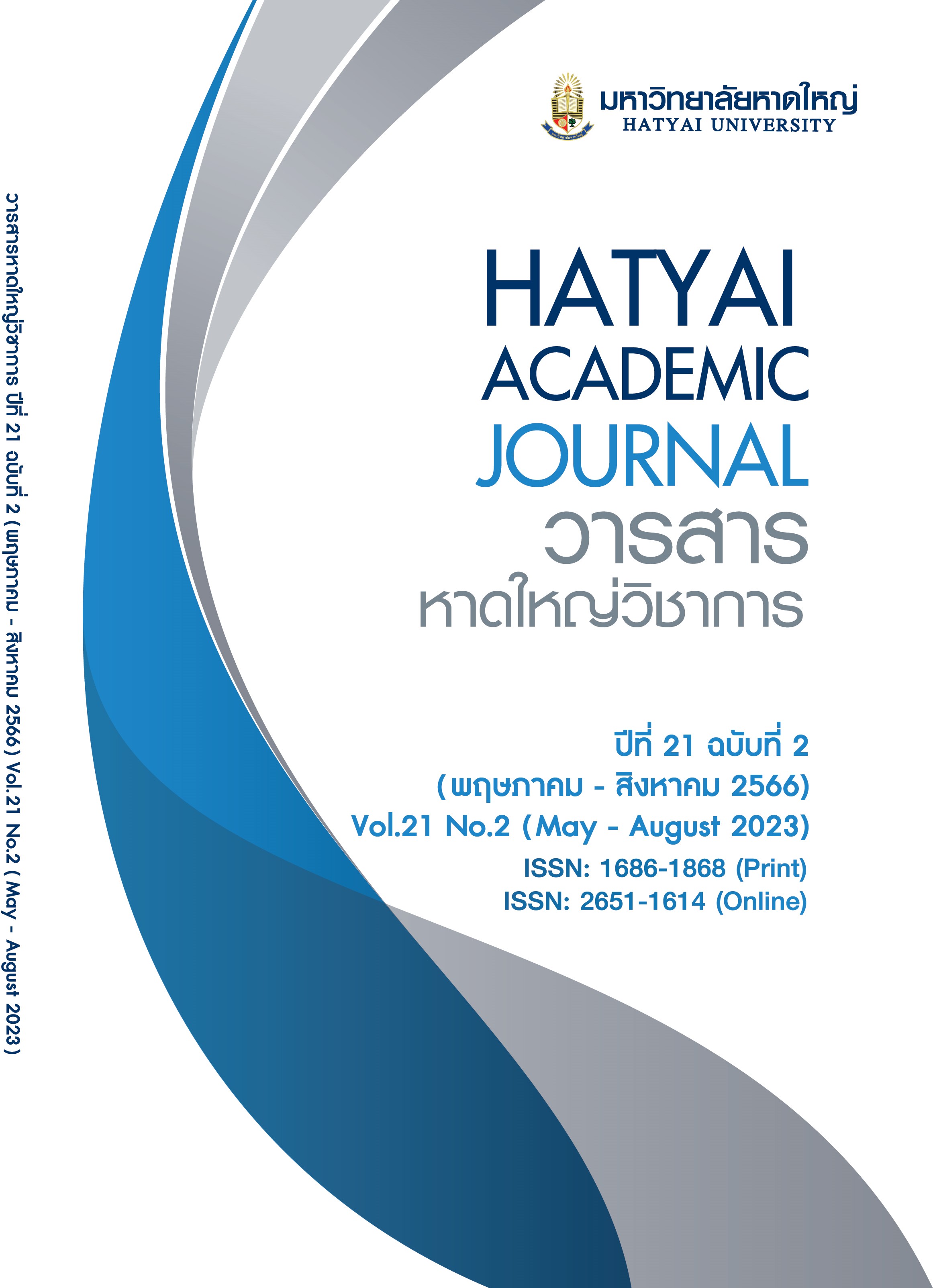คุุณลักษณะและความต้องการที่่หลากหลายของเด็กนอกระบบการศึกษาในประเทศไทย
Main Article Content
บทคัดย่อ
การวิจัยนี้มีวัตถุประสงค์เพื่อสํารวจคุณลักษณะของเด็กนอกระบบการศึกษา ตลอดจนวิเคราะห์ความต้องการความช่วยเหลือ รวมถึงเป้าหมายด้านการศึกษาและการประกอบอาชีพของเด็กนอกระบบการศึกษา ตัวอย่างในการวิจัย คือ เด็กนอกระบบการศึกษาในประเทศไทย จํานวน 35,003 คน โดยใช้วิธีการเลือกแบบอาสาสมัคร เก็บข้อมูลโดยใช้แบบสอบถาม ข้อมูลเชิงปริมาณ วิเคราะห์โดยใช้สถิติบรรยาย การวิเคราะห์ความแปรปรวนทางเดียว และการวิเคราะห์การสมนัย สําหรับข้อมูลเชิงคุณภาพวิเคราะห์ด้วยการวิเคราะห์เนื้อหาและนําเสนอด้วยเวิร์คคลาวด์ผลการวิจัยเปิดเผยว่า เด็กนอกระบบการศึกษาส่วนใหญ่มีวุฒิการศึกษาในระดับต่ํากว่าระดับมัธยมศึกษา ปีที่สาม ยิ่งไปกว่านั้นมีเด็กที่ไม่เคยได้รับการศึกษาร้อยละ 10 มีจํานวนสูงกว่าร้อยละ 50 ที่ไม่มี เอกสารแสดงตัวบุคคล ปัจจัยสําคัญที่สุดที่ทําให้เด็กกลุ่มนี้เป็นเด็กนอกระบบการศึกษาคือความยากจนของครอบครัว ผลการวิเคราะห์การสมนัยชี้ให้เห็นว่า เด็กนอกระบบการศึกษามีเป้าหมาย ด้านการศึกษาและการประกอบอาชีพแตกต่างกันโดยแบ่งได้เป็นสามกลุ่ม คือ 1) กลุ่มที่ไม่มีเป้าหมายชัดเจนทั้งด้านการศึกษาและการประกอบอาชีพ 2) กลุ่มที่ต้องการศึกษาต่อ และ 3) กลุ่มที่ไม่ต้องการศึกษาต่อ ดังนั้นกระบวนการส่งเสริมการศึกษาสําหรับเด็กนอกระบบการศึกษาจึงควรออกแบบให้มีความยืดหยุ่นและสอดคล้องกับความต้องการของเด็กนอกระบบการศึกษาแต่ละกลุ่ม
Article Details

This work is licensed under a Creative Commons Attribution-NonCommercial-NoDerivatives 4.0 International License.
บทความทุกเรื่องจะได้รับการตรวจสอบความถูกต้องทางวิชาการโดยผู้ทรงคุณวุฒิ (peer review) ข้อความและบทความในวารสารหาดใหญ่วิชาการเป็นแนวคิดของผู้เขียน มิใช่ความคิดเห็นของคณะผู้จัดทำ และมิใช่ความรับผิดชอบของมหาวิทยาลัยหาดใหญ่ กองบรรณาธิการวารสารหาดใหญ่วิชาการ ไม่สงวนสิทธิ์การคัดลอกบทความเพื่อใช้ประโยชน์ทางวิชาการ แต่ให้อ้างอิงแสดงที่มาของบทความ
References
Boontavee, P. (2005). Famity factors and social behaviors affecting drop-out of private vocational school students in Chiang Mai Province (Master’s thesis). Chiang Mai University, Chiang Mai. [in Thai]
Chitradub, S. (2019). Education for underprivileged children with the concept of “No one left behind”. Bangkok: Equitable Education Fund. [in Thai]
Jones, K., Wilson, R., Clark, L., & Dunham, M. (2018). Poverty and parent martital status influences on student achievement. Educational Research Quarterly, 42(1), 62-80.
Kowtrakul, S. (2013). Educational psychology. Bangkok: Chulalongkorn University Printing House. [in Thai]
Letseka, M., & Breier, M. (2008). Student poverty in higher education: The impact of higher education dropout on poverty. In S. Maile (Ed.), Education and poverty reduction strategies: Issues of policy coherence (pp. 83-101). Cape Town, South Africa: HSRC.
Maslow, A. H. (1970). Motivation and personality (2nd ed.). New York: Harper & Row.
Ministry of Education. (2010). National Education Act B.E.2542 (1999) and Amendments (Second National Education Act. B.E. 2545 (2002) and B.E. 2553 (2010). Bangkok: Kurusapa Printing. [in Thai]
Nakornthap, A. (2014). Unprivileged children: Critical point for future of the nation. Bangkok: Sahamitr. [in Thai]
Office of the Education Council. (2017). Report on the synthesis of educational indicators in Thailand according to the target of sustainable development. Bangkok: Phrikhwangraphic. [in Thai]
Office of the National Economic and Social Development Council. (2021). National strategy and country reform (revised). Retrieved from http://www.ratchakitcha. soc.go.th/DATA/PDF/2564/E/044/T_0001.PDF [in Thai]
Office of the Teacher Civil Service and Educational Personnel Commission. (2020). Workforce ratio criterion for government teachers and educational personnel in schools under OBEC. Retrieved from https://otepc.go.th/th/content_page/ item/3238-23-3563.html [in Thai]
Pathumcharoenwattana, W., Pathumcharoenwattana, W., Charungkaittikul, S., Chuymanee, K., Chudasring, R., Chumpong, C., … , Mohamadrugsapol, M. (2021). Advancing of driving mechanisms of out-of-school teacher, children and youth. Bangkok: Equitable Education Fund. [in Thai]
Pitukthanin, A., Kao-iean, S., Sumano, B., Boonmee, T., Pulsukserm, C., Hayook, C., … , Tanrattana, A. (2020). Development of knowledge and a model education for children in street in Bangkok. Bangkok: Equitable Education Fund. [in Thai]
Sariwat, L. (2014). Psychology for teachers. Bangkok: Odeon Store. [in Thai]
Shahrawat, A., & Shahrawat, R. (2017). Application of Maslow’s hierarchy of needs in a historical context: Case studies of four prominent figures. Psychology, 8(7), 939-954.
Srisuttiyakorn, S. (2019). Educational inequality and its factors: Multilevel analysis integrated with median-based class of generalized entropy inequality index. Journal of Research Methodology, 32(3), 341-379. [in Thai]
Tantichuwet, P. (2016). Appropriate educational provision guidelines for out-of-school children: Case study at Tak Province (Research report). Bangkok: Dhurakij Pundit University. [in Thai]
The Secretariat of The House of Representatives. (2012). Child rights in Thai Constitution. Retrieved from https://www.parliament.go.th/ewtadmin/ewt/parliament_parcy/download/article/article_20120821094823.pdf [in Thai]
Thongdeelert, C., Pathumcharoenwattana, W., Akkharasilachai, T., Sabaychai, T. K., Sabaychai, W., Toniti, N., & Vittayasomboon, T. (2020). A study of BOK of alternative education in Thai social with guidelines to action toward sustainable development. Bangkok: Thailand Science Research and Innovation (TSRI). [in Thai]
United Nations Development Programme. (2016). Human development report 2016. Retrieved from http://hdr.undp.org/sites/default/files/2016_human_development_report.pdf [in Thai]
Woraurai, M. (2009). Lifestyles of steet children in Bangkok (Master’s individual study report). Retrieved from https://doi.nrct.go.th/ListDoi/listDetail?Resolve_DOI=10.14457/TU.the.2009.323 [in Thai]
